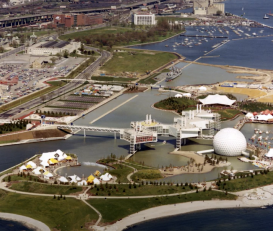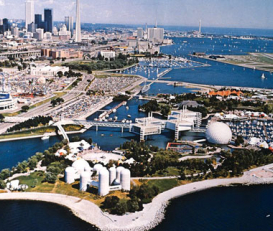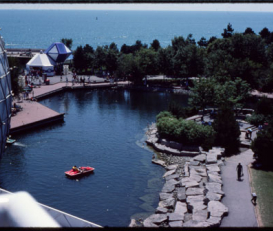
Two years after graduating from the landscape architecture program at State University of New York (Syracuse), Jim moved to Toronto in 1966 to begin a new career adventure with start-up firm Michael Hough and Associates. Jim brought sound expertise, having worked with the U.S National Parks Service with their teams of foresters, biologists and engineers, and he was passionate about outdoor landscape experiences and recreation planning.
Although much of his early work with Hough included urban design projects like Ontario Place and Scarborough College, his passion drove his desire to build a practice in resource planning and management with multi-disciplinary teams. In his first project, the Frontenac Provincial Park management plan, he fought to create a new concept, “threshold wilderness”. This marked a pivotal change in how provincial parks operated in the day. Jim advocated designing within the sensitivity of the landscape, creating backwoods experiences for both recreational training and exploration of the park’s landscape attributes.
Interested in rural planning assignments, Jim worked with his partners to develop a methodology for land management using new watershed-based research to determine lake development capacity. His ground-breaking study, “Lakealert” (1971), set standards for a manual which would guide planning for cottage development and watershed protection.
His managerial leadership in the firm (then Hough Stansbury + Associates) strengthened the firm’s capability as he built ecology and economics into his award-winning studies for many levels of government. Specialty studies in tourism and waterfront development and recreation, based rigorously on environmental feasibility, became a key foundation of the firm’s work. As one of the only environmental planning and design practices within the country in the 1970s and 80s, the firm was known for its unique staff blend of landscape architects, urban designers, planners and biologists.
A few of his pioneering projects include: Woodland Caribou Provincial Park (1980), Native People Relationships (1991), Crown Lands Recreation Study (1976), Alternative Organizational Models for Provincial Park Delivery (1994), Small Craft Harbours Recreational Boating Study (1985), Port Credit Harbour Study (1991), Dinosaur Provincial Park (1975), East Point Park (1981), Bronte Outer Harbour Waterfront Park (1988), Superior North Tourism Corridor Study (1989).
Jim’s special talent in mediation and facilitation underpinned his work: a sound understanding of community and local values contributed to good landscape planning and design. Jim returned to the U.S. in 1994, establishing a sole practitioner firm in Florida based on these particular skills: Stansbury Resolutions by Design.
SOURCES
For Further Viewing:
The Future of Ontario Place: James Stansbury
IMAGES
1 – 4 Ontario Place: A re-creation of natural landscapes that transformed access to the waterfront, with 45 acres of islands, beaches, a 300-boat marina, circa 1970. Archival photos City of Toronto Archives, Series 1465 Photos: 1-3 City of Toronto Archives, Series 1465 4 Courtesy Ron Williams
5 In the management plan for Frontenac Provincial Park, established 1974, Jim Stansbury fought to create a new concept, “threshold wilderness”. Photo Courtesy Friends of Frontenac Park: Shane Peters, World Above Photography.
6 Port Credit Harbour today – planning for what has become one of the largest marinas in North America (Tourism Mississauga)





